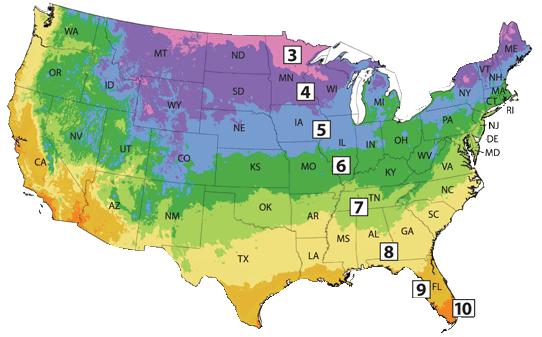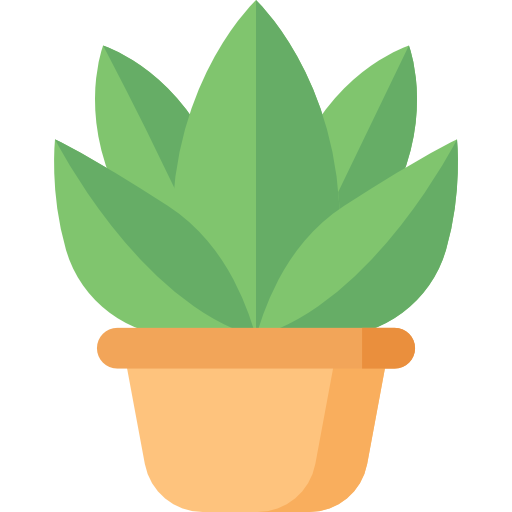Barrel Cactus Varieties - Everything You Need to Know!
Updated: January 28, 2025

When it comes to barrel cacti, the most popular by far is the golden barrel cactus . Other types of barrel cactus are: blue barrel cactus, white barrel cactus, fire barrel cactus, Schwarz's barrel cactus, and Coville barrel cactus.
In this comprehensive guide from Planet Desert, we will go through the different types of barrel cactus, where to buy them; plus, tips and tricks to keep your barrel cactus thriving.
About Barrel Cactus
One of the most notable characteristics of barrel cacti is their rounded top or barrel-shaped body, which gives them their common name. The fishhook barrel cactus doesn't get much bigger than a baseball, while the golden barrel cactus can be three feet in diameter and weigh well over 100 lbs.
A prominent feature of all barrel cacti is ribs that run vertically along their body, giving them a ribbed appearance. These ribs allow the cactus to expand and store water during periods of rainfall, enabling them to survive in dry and arid conditions.

Another striking feature of barrel cacti is their spines. These cacti are covered in a dense array of sharp spines that serve multiple purposes. The spines help protect the cactus from animals, provide shade to the cactus's body, and reduce water loss by creating a barrier against excessive evaporation.
Barrel cacti are well-suited to desert landscapes and xeriscapes, and grow along desert washes and gravelly downhills, as they require minimal water and thrive in full sun. They can be a striking addition to gardens or even potted arrangements, adding a touch of desert beauty to any space.
They have evolved to survive in arid environments, making them a resilient and captivating choice for plant enthusiasts! It can be easily grown as a houseplant in a container, and it is tolerant to a wide array of conditions.
Blooming Barrel cactus – What You Need to Know!
When the spring and summer seasons roll around, barrel cacti put on a magnificent show with their vibrant and eye-catching flowers. These flowering cactus plants come in a range of stunning colors, such as yellow, orange, red, and pink. The barrel cactus can live to be over 100 years old. Barrel cactus buds typically start to bloom in April with a bright yellow or orange flower.

The flowers of barrel cacti are not only visually appealing but also serve an important purpose. They attract pollinators like bees and birds, who are drawn to their bright colors and sweet nectar. As the pollinators visit the flowers in search of food, they inadvertently transfer pollen from one flower to another, enabling the cacti to reproduce and produce bright yellow fruit.
Barrel Cactus Fruits
Barrel cactus fruits not only add a burst of color to the cactus, but they're also packed with nutritional goodness. Barrel cactus fruits are known to be rich in vitamin A and vitamin C, making them a healthy treat. On average, a mature barrel cactus can have anywhere from 12 to 24 fruits ripe at once, creating a beautiful display of vibrant colors.

After the flowers have been pollinated, they gradually give way to fruits. These fruits contain seeds that can be dispersed by animals or the wind, allowing new barrel cacti to grow in different locations. It's a fascinating process that ensures the survival and propagation of these remarkable cacti in their arid habitats.
How to Keep Your Barrel Cactus Happy & Healthy
QUICK REFERENCE GUIDE - Detailed Care Instructions can be found further down the page

Bloom Season

Flower Color

Growth Rate

Hardiness Zone

Mature Size

Plant Type

Sun Exposure

Toxicity

Watering Needs
Our Favorite Barrel Cactus Plants

1
Golden Barrel Cactus
Buy at Planet Desertkeypoints:
- USDA Hardiness Zones: 9-10-11
- Blooming Period:Mid-Summer
- Sun Exposure: Full sun – Partial shade
- Toxicity:Safe for humans – Safe for Pets
The golden barrel cactus or golden ball cactus, also known as Echinocactus grusonii, is the most popular cactus species native to Central and south of Mexico's deserts. Its distinctive round shape and vibrant golden spines make it a unique and eye-catching plant. With a compact, spherical form, it can grow up to 3 feet tall and wide. The golden barrel cacti thrive in well-draining soil and sunlight, making it a low-maintenance plant. With its stunning golden hue and impressive resilience, the golden barrel cactus is a true gem in the world of cacti!

2
White Barrel Cactus
Buy at Planet Desertkeypoints:
- USDA Hardiness Zones: 9-10-11
- Blooming Period:Summer
- Sun Exposure: Full sun – Partial shade
- Toxicity:Safe for humans – Safe for Pets
The white barrel cactus, also known as Echinocactus grusonii albispinus, is a unique and eye-catching cactus species native to the southwestern United States and Mexico. Its cylindrical shape and compact size, allowing it to grow up to 35 inches tall and wide, make it a beautiful contrast against its greenish-gray color. In spring and summer, it produces yellow or red flowers, adding color to its charm. With its striking white spines and ability to withstand harsh conditions, the white barrel cactus is a fascinating choice for cactus lovers!

3
Blue Barrel Cactus
Buy at Planet Desertkeypoints:
- USDA Hardiness Zones: 9-10-11
- Blooming Period:Spring-Late Summer
- Sun Exposure: Full sun – Partial shade
- Toxicity:Safe for humans – Safe for Pets
The blue barrel cactus, also known as Ferocactus glaucescens, is a super cool cactus species. It gets its name from the bluish-gray color of its body, which gives it a unique and captivating appearance. This cactus is native to the arid regions of Mexico and is well-suited to thrive in hot and dry conditions. With its round shape and stout size, the blue barrel cactus can grow up to 22 inches tall and 20 inches wide. It has ribbed segments that are covered in sharp spines, creating a striking contrast against its blue-gray hue. During the spring and summer, it produces vibrant yellow flowers that bloom near the top of the cactus, adding a pop of color to its overall charm. With its unique blue coloration and ability to withstand harsh conditions, the blue barrel cactus is a fascinating choice for cactus enthusiasts!

4
Fire Barrel Cactus
Buy at Planet Desertkeypoints:
- USDA Hardiness Zones: 9-10-11
- Blooming Period:Spring-Summer
- Sun Exposure: Full sun – Partial shade
- Toxicity:Safe for humans – Safe for Pets
The fire barrel cactus, also known as Ferocactus pilosus, is an amazing cactus species. It gets its name from the fiery red spines that cover its body, giving it a striking and captivating appearance. This cactus is native to the desert regions of Mexico and is well-adapted to thrive in hot and arid conditions. With its cylindrical shape and robust size, the fire barrel cactus can grow up to 4 feet tall and wide. It has ribbed segments that are covered in long, sharp spines, creating a beautiful contrast against its greenish-brown color. During the spring and summer, it produces stunning yellow or red flowers that bloom near the top of the cactus, adding a burst of color to its overall allure.

5
Schwarz's Barrel Cactus
Buy at Planet Desertkeypoints:
- USDA Hardiness Zones: 10-11
- Blooming Period:Spring-Summer
- Sun Exposure: Full sun – Partial shade
- Toxicity:Mildly Toxic for Humans—Mildly Toxic for Pets
Schwarz's barrel cactus, also known as Ferocactus schwarzii, is a unique cactus species native to the Baja California region of Mexico. Named after botanist Dr. Julius Schwarz, it has a cylindrical shape and can grow up to 10 feet tall and 3 feet wide. Its striking yellowish spines create a visually appealing display, while its green or bluish-green body contrasts with the spines. In spring and summer, it produces vibrant yellow or orange flowers. With its unique spines and beautiful flowers, Schwarz's barrel cactus is a captivating choice for cactus enthusiasts!

6
Coville’s Barrel Cactus
Buy at Planet Desertkeypoints:
- USDA Hardiness Zones: 9-10
- Blooming Period:Late Spring-Summer
- Sun Exposure: Full sun – Partial shade
- Toxicity:Mildly Toxic for Humans—Mildly Toxic for Pets
The Coville barrel cactus, also known as Ferocactus emoryi, is a fascinating desert plant. It features a barrel-shaped body with spines that can range in color from yellow to reddish-brown. This cactus is native to the arid regions of northern Mexico and southwestern United States. It has adapted to survive in extreme desert conditions by storing water in its thick stem. The Coville barrel cactus blooms with vibrant yellow or orange flowers, adding a beautiful touch to the desert landscape. It's a true marvel of nature's resilience and beauty.

7
Texas barrel cactus
Buy at Planet Desertkeypoints:
- USDA Hardiness Zones: 6-7-8-9-10-11
- Blooming Period: Spring- Early Summer
- Sun Exposure: Full sun – Partial shade
- Toxicity:Mildly Toxic for Humans—Mildly Toxic for Pets
The Texas barrel cactus, also known as Ferocactus hamatacanthus, is a remarkable desert plant. It showcases a barrel-like shape with spines that can vary in color from yellow to reddish-brown. This cactus is native to the arid regions of Texas and northern Mexico. It has adapted to thrive in harsh desert conditions by storing water in its thick stem. The Texas barrel cactus blooms with stunning yellow or orange flowers, adding a vibrant touch to the desert landscape. It's truly a captivating sight to behold!

8
Red Barrel Cactus
keypoints:
- USDA Hardiness Zones:9-10-11
- Blooming Period: Late Spring- Summer
- Sun Exposure: Full sun – Partial shade
- Toxicity:Mildly Toxic for Humans—Mildly Toxic for Pets
The red barrel cactus, also known as Ferocactus cylindraceus, is a striking desert plant. It features a cylindrical shape with beautiful red or reddish-orange spines that give it a unique and eye-catching appearance. This cactus is well-adapted to survive in harsh desert conditions and can store water in its thick stem to withstand drought. With its vibrant color and resilience, the red barrel cactus is a true gem of the desert landscape.

9
Fishhook barrel cactus
keypoints:
- USDA Hardiness Zones:9-10-11
- Blooming Period: Summer
- Sun Exposure: Full sun – Partial shade
- Toxicity:Mildly Toxic for Humans—Mildly Toxic for Pets
The fishhook barrel cactus, also known as Ferocactus wislizeni, is a fascinating desert plant. It gets its name from the distinctive hooked spines that resemble fishhooks. It is also known as Arizona barrel cactus, Southwestern barrel cactus, or candy barrel cactus. This cactus is native to the arid regions of the southwestern United States and northern Mexico. It has adapted to survive in harsh desert conditions by storing water in its thick stem. The fishhook barrel cactus blooms with vibrant yellow or red flowers, adding a beautiful splash of color to the desert landscape. It's a true marvel of nature's resilience and beauty!

10
Crested Golden Barrel Cactus (Echinocactus grusonii cristatus)
BUY AT PLANET DESERTkeypoints:
- USDA Hardiness Zones: 9, 10, 11
- Blooming Period: Summer
- Sun Exposure: Full sun, partial shade
- Toxicity: Mildly toxic to humans, mildly toxic to pets
The Crested Golden Barrel cactus, a fascinating variation of the Golden Barrel cactus. It is a highly sought-after cactus due to its unique and captivating appearance. Instead of the typical spherical shape, the Crested Golden Barrel cactus exhibits a cresting growth pattern, forming intricate, wavy, and fan-like shapes that resemble a brain or a coral reef. This abnormal growth is caused by a genetic mutation, resulting in a mesmerizing and rare form of the Golden Barrel cactus. Learn more...
Yearly Plant-Care Schedule for Barrel Cacti
Spring
- Give your barrel cactus a balanced NPK fertilizer with a ratio of 5-10-5.
- Gradually increase watering as the weather warms up.
- Consider repotting if the cactus has outgrown its current container.
Summer
- Provide ample sunlight for the cactus, but avoid exposing it to intense, direct heat.
- Water deeply but infrequently, allowing the soil to dry out between waterings.
- Watch out for signs of dehydration, such as shriveling, and water accordingly.
Fall
- Reduce watering as temperatures cool down.
- Protect the barrel cactus from frost by moving it indoors or providing a frost cover.
- Avoid fertilizing during this time as the golden barrel cactus enters a dormant period.
Winter
- Keep the golden barrel cactus in a cool, dry location with plenty of sunlight.
- Water sparingly, allowing the soil to dry out completely between waterings.
- Monitor any signs of pests or diseases and take appropriate action.
Barrel Cactus Watering Needs
When it comes to watering barrel cacti, it's important to remember that these desert dwellers have adapted to survive in arid conditions. As such, they have unique watering requirements that differ from most other plants.

Barrel cacti are built to store water in their thick stems, allowing them to endure long periods of drought.
But when water becomes scarce, they have a fantastic adaptation where they can shrink or shrivel up to conserve water.
This allows them to survive in arid environments and go for long periods without water, sometimes even years.
Additionally, if you notice them shriveling up, it's a sign that they're stressed and in need of water.
Overwatering can be detrimental to these resilient barrel cactus plants, as it can lead to root rot and other issues. It's truly fascinating how resilient and adaptable these cacti can be!
To properly care for your barrel cactus, it's best to follow a "soak and dry" watering method. This means thoroughly watering the soil around the cactus until it is soaked, and then allowing the soil to completely dry out before watering again. The frequency of watering will depend on factors such as the climate, temperature, and humidity of your specific location.
It's important to note that during the winter months, when barrel cacti enter a period of dormancy, their watering needs decrease significantly. During this time, it's best to reduce watering and allow the soil to dry out even more between waterings.
By understanding and respecting the unique watering needs of the barrel cactus, you can help ensure its health and longevity. Remember, less is often more when it comes to watering these resilient desert beauties!

Barrel Cactus Light Requirements
Barrel cacti are sun-loving cactus plants that thrive in full sunlight to partial shade. They are accustomed to the intense rays of the desert sun and require ample light to grow and flourish. So, if you're planning to have a barrel cactus as a houseplant, make sure to place it in a spot that receives plenty of sunlight throughout the day.
Ideally, the barrel cactus should be exposed to at least six hours of direct sunlight each day. This can be achieved by placing it near a sunny window or in a sunny spot outdoors. The more sunlight it receives, the better it will grow and maintain its distinctive shape.
However, it's important to strike a balance when it comes to sunlight exposure. While barrel cacti love the sun, they can also get sunburned if exposed to prolonged periods of intense sunlight, especially during the hottest part of the day. So, if you live in an extremely hot climate, it's a good idea to provide some shade during the peak sun hours to protect your cactus from scorching.
Remember, finding the right balance of sunlight is key to keeping your barrel cactus happy and healthy. So, give it plenty of bright, direct sunlight, but also be mindful of providing some shade when needed.
Barrel Cactus Hardiness Zone & More
Outdoors, Barrel cacti are generally hardy in USDA hardiness zones 8 to 11. These zones are characterized by mild to warm climates, where the average minimum winter temperatures range from 20 to 40 degrees Fahrenheit. If you live in a colder region, it's best to grow barrel cacti as indoor plants or in containers or pots that can be brought indoors during the winter months.
In terms of temperature, barrel cacti prefer warm conditions. They can tolerate high temperatures, even up to 100 degrees Fahrenheit, as long as they are not exposed to prolonged periods of extreme heat. It's important to provide adequate ventilation and avoid placing the cactus directly in front of hot, direct sunlight during the hottest part of the day.
When it comes to humidity, barrel cacti are well-suited to desert environments and prefer low humidity levels. They can tolerate very dry soil conditions and do not require high levels of humidity. Excessive humidity can increase the risk of fungal diseases. It's best to provide good air circulation and avoid overwatering to maintain a drier environment for your barrel cactus.
By understanding the hardiness zone, temperature preferences, and humidity needs of the barrel cactus, you can create the ideal conditions for its growth and ensure its health and vitality.
Barrel Cactus Optimal Soil & Fertilizer Needs
When it comes to choosing the right soil for your favorite golden barrel cacti, you need to be careful! It's like picking out the perfect outfit for a date - you want to make sure everything is just right so there no surprises later on.

You see, the amount of moisture in the soil can literally make or break your little green friend. Too much water and BAM! You've got root and stem rot faster than you can say "succulent." That's why we at Planet Desert have got your back with our specialized cactus potting mix. This organic substrate has mycorrhizae which helps grow a healthy root system that makes all those spiky stems stand up tall and proud.
As an okay alternative, you can create your own potting mix by combining equal portions of perlite, coarse sand, and good natural potting soil.
As for fertilizing, barrel cacti are not heavy feeders and can thrive without regular fertilization. In fact, too much fertilizer can actually harm this hardy cactus. It's best to use a balanced, water-soluble fertilizer specifically formulated for cacti and succulents. During the active growing season, which is typically spring, you can fertilize your barrel cactus once a year. However, during the dormant period in winter, it's best to avoid fertilizing altogether, as the cactus is not actively growing and doesn't require additional nutrients.
By providing your barrel cactus with well-drained soil and a light touch of fertilizer during the growing season, you can help it thrive and maintain its unique beauty.
How to Care for Your Barrel Cactus Indoors?
When caring for a barrel cactus indoors, there are a few key things to keep in mind. First, make sure to place your cactus in a spot that gets plenty of bright, indirect sunlight. It's important to avoid exposing it to intense, direct sunlight, as it can cause sunburn.
When it comes to watering, remember that barrel cacti are desert plants and can go for long periods without water. Allow the soil to completely dry out between waterings, and then water deeply, ensuring excess water drains out. Additionally, maintain a warm temperature for your golden barrel cactus, ideally between 70-90°F, and protect it from frost. Using a well-drained cactus mix and a shallow, wide pot with drainage holes will help keep your barrel cactus happy and healthy indoors.
Potting & Repotting of Barrel Cactus
When potting a barrel cactus, it's important to choose a well-draining potting mix specifically formulated for cacti and succulents. This type of mix allows excess water to drain away quickly, preventing root rot. Make sure the pot has drainage holes at the bottom to facilitate proper drainage.
When repotting a barrel cactus, it's best to do so during the warmer months when your cactus is actively growing. Gently remove the cactus from its current pot, being careful not to damage the roots. Inspect the roots for any signs of rot or damage and trim them if necessary. Then, place the cactus in a slightly larger pot with fresh potting mix, ensuring that the base of the cactus is level with the rim of the pot. Lightly press the soil around the roots to provide stability.
After repotting, avoid watering the cactus for a week or so to allow any root damage to heal. Then, resume regular watering, making sure to water thoroughly but allowing the soil to dry out completely between waterings. This helps prevent overwatering and promotes healthy root growth.
Barrel Cactus Pruning
Pruning a barrel cactus is a bit different from pruning other types of plants. Since barrel cacti have a unique shape and pattern, pruning is usually not necessary for their overall health and growth.
If your barrel cactus has damaged or diseased parts, it's important to remove them to prevent further spread. Use clean, sharp pruning shears or a knife to carefully cut away any affected areas. Make sure to sterilize your tools before and after pruning to minimize the risk of spreading diseases.
Remember, pruning should be done sparingly and only when necessary. Barrel cacti are resilient and can usually thrive without much intervention. Regularly monitoring your cactus for any signs of damage or disease and providing proper care will help keep it healthy and happy.
Overwintering
Like many other desert plants, the different types of barrel cactus all have a clever strategy for surviving the harsh winter conditions. During the colder months, these cacti enter a period of dormancy. So, overwintering is necessary for barrel cacti because it allows them to conserve energy and protect themselves from freezing temperatures. By slowing down their metabolic processes, the cacti can withstand the cold without suffering damage to their tissues. They become more resilient and can bounce back when warmer weather returns.
During this period, barrel cacti rely on the water they've stored in their thick, fleshy stems to sustain themselves. This water acts as insulation against the cold and helps them survive without needing to actively absorb moisture from the environment. It's like their own little survival kit!
So, overwintering is a crucial part of the barrel cactus’ life cycle, allowing them to endure the challenging winter conditions and thrive in their arid habitats. It's a remarkable adaptation that showcases the resilience of desert plants.
Medicinal Uses of the Barrel Cactus
The barrel cactus has a long history of traditional medicinal uses by indigenous peoples. It is believed that the pulp of the cactus can be used topically to soothe burns, cuts, and insect bites. Its gel-like consistency helps to moisturize and provide a protective barrier for the skin. Its pulp can be applied externally as an analgesic.
Additionally, some cultures have used the barrel cactus as a natural remedy for digestive issues. The pulp of the cactus is said to have a mild laxative effect, aiding in relieving constipation. However, it's important to note that the use of any medicinal plant should be approached with caution and under the guidance of a healthcare professional.
The barrel cactus has been studied for its potential anti-inflammatory and antioxidant properties. Certain compounds found in the cactus may have beneficial effects on reducing inflammation and protecting against oxidative stress. However, more research is needed to fully understand and validate these potential medicinal benefits.
It's fascinating to explore the diverse uses of plants like the barrel cactus in traditional medicine. Remember, though, it's always important to consult with a healthcare professional before using any natural remedies.
Propagating Barrel Cactus
When it comes to propagating barrel cacti, there are two common methods: using seeds or pups. When propagating from seeds, it's important to know that they can take many years just to reach the size of a baseball. It's a slow process, and most people may not want to wait that long. That's why buying a mature barrel cactus is often the best option. It allows you to enjoy the beauty of a fully grown cactus without waiting. Plus, mature barrel cacti are readily available and come in various sizes and shapes. So, if you're looking to add a barrel cactus to your collection, purchasing one is definitely the way to go!

Propagation by Seeds of Barrel Cactus
- Start by collecting mature seeds from a healthy barrel cactus. Allow the seeds to dry for a few days before planting.
- Prepare a well-draining compost and potting mix specifically for cacti and succulents.
- Sow the seeds on the surface of the soil and lightly press them down. Avoid burying them too deep.
- Mist the soil with water to moisten it, and then cover the pot with a clear plastic bag or a plastic dome to create a greenhouse-like environment.
- Place the pot in a warm and bright location but avoid direct sunlight as it can cause overheating.
- Keep the soil consistently moist but not waterlogged. Mist the soil whenever it starts to dry out.
- After a few weeks, you should start to see seedlings sprouting. Once they have grown a bit, you can remove the plastic covering.
- As the seedlings grow, gradually expose them to more sunlight to help them acclimate.
Remember, it may take one to two months for the seeds to germinate or to root and grow. With proper attention to watering, light, and temperature, you can successfully propagate your barrel cacti.
Pests & Common Problems of Barrel Cactus
Barrel cacti are generally resilient plants, but they can still face a few common problems and pests.
Mealybugs: These tiny white insects can infest barrel cacti, feeding on their sap and causing damage. Keep an eye out for cotton-like clusters on the cactus, and if you spot them, gently wipe them away with a cotton swab dipped in rubbing alcohol.
Root Rot: Overwatering or poor drainage can lead to root rot in barrel cacti. This can cause the roots to become mushy and eventually kill the plant. To prevent this, make sure to water your cactus sparingly and ensure that the soil is well-drained.
Sunburn: While barrel cacti love sunlight, they can get sunburned if exposed to intense, direct sunlight for extended periods. To avoid this, provide some shade during the hottest parts of the day, especially in the summer.
Frost Damage: Barrel cacti are generally hardy, but they can still suffer damage from frost. If you live in a colder climate, it's best to protect your cactus during freezing temperatures by moving it indoors or providing some form of insulation.
Remember, taking good care of your barrel cactus by providing the right conditions and addressing any issues promptly will help keep it healthy and thriving.
Where to Buy Barrel Cactus?
When it comes to buying barrel cactus, the best place to buy online and get them shipped to your door is here at PlanetDesert.com, also there are very few nurseries that specialize in cacti, so you probably won't find anything but golden barrel anywhere.
Planet Desert is the place that cactus lovers go to when they want the best collection and customer service around. So why hold off? Prepare to expand your collection with some gorgeous cacti by continuing to explore Planet Desert!
Barrel Cactus Quick Growing Reference Guide
| Bloom Season | Spring-- Summer |
|---|---|
| Botanical Name | Ferocactus -- Echinocactus -- Echinocereus |
| Common Name | Barrel Cactus |
| Dormancy | Winter |
| Family | Cactaceae |
| Flower Color | Bright Yellow--Orange--Red--Pink--Purple |
| Genus | Ferocactus Spp. -- Echinocactus Spp. -- Echinocereus Spp. |
| Growth Habit | Globular |
| Growth Rate | Slow -- Moderate |
| Hardiness Zone | 9, 10, 11 |
| Mature Size | 3 - 10 ft tall -- 4 ft. wide |
| Native Area | Arizona -- Texas -- Mexico |
| Plant Type | Perennial cactus |
| Propagation | By seeds |
| Resistance | Drought tolerant – pest resistant—heat tolerant |
| Soil PH | 6.5--Acidic--Neutral |
| Soil Type | Specialized Cactus potting mix |
| Special Features | Ornamental plants –medicinal uses |
| Sun Exposure | Full Sun to partial shade |
| Toxicity | Mildly toxic to humans--Mildly toxic to pets |
| Watering Needs | Low |
The Bottom Line
Overall, these barrel cacti are not only visually striking with their spiky appearance, but they also have the ability to store a lot of water, making them a great low-maintenance plant for your home or garden. Their low maintenance requirements make them a great choice for busy individuals. Plus, they can adapt to different landscapes and thrive in arid environments. So, if you're looking for a unique and hassle-free addition to your barrel cactus plant collection, a barrel cactus is definitely worth considering!
Frequently Asked Questions
Barrel cacti are unique cactus varieties, such as golden barrel cactus, blue barrel cactus, and white barrel cactus, with a barrel-like shape, water-storing ability, and striking flowers. They have a round, chubby body with prominent ribs and can grow large over time.
Their thick stems allow them to survive in arid environments with limited rainfall, making them low-maintenance plants. Their vibrant flowers range from yellow to pink and red, adding a pop of color to their unique appearance.
No, the different types of Barrel cactus are not poisonous, so you can rest easy having them around. They don't contain any toxic substances that could harm pets or children if accidentally ingested. However, it's always a good idea to keep an eye on little ones and furry friends to prevent any potential injuries from the cactus's spines.
The spines can be sharp, so it's best to handle barrel cacti with care. But overall, they are safe and make a great addition to your plant collection!
No, a barrel cactus is not a fruit. It is a type of cactus plant with a unique barrel-like shape. At least 15 species of barrel cactus do produce edible fruit. The fruit of the barrel cactus is often referred to as "cactus figs" or "barrel cactus fruit." These fruits are typically small and have a sweet, juicy flavor. They can be consumed by humans and are sometimes used in culinary preparations such as jams, jellies, and candies.
Barrel cacti are often used as ornamental plants, with golden barrel cacti being the most popular in gardens and landscaping due to their unique shape and striking flowers. Barrel cacti are used for traditional crafts like needles and fishing hooks, as well as medicinal purposes like soothing burns and insect bites.
Their stems store water, which can be used in survival situations. So, whether it's for crafting, survival, or adding beauty to your surroundings, barrel cacti have a variety of uses!
When it comes to different types of barrel cacti, there are quite a few to choose from; with golden barrel cacti being the most popular. Some other popular ones include the Fishhook Barrel Cactus, the blue barrel cactus, white barrel cactus, red barrel cactus, coville barrel cactus, Texas barrel cactus, fire barrel cactus, and the California Barrel Cactus. Each type has its own unique characteristics, but they all share that classic barrel-like shape.


















